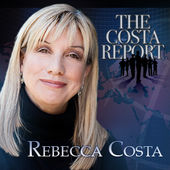ARE YOU READY FOR SENSORWORLD? by Rebecca Costa
Sensors, sensors, everywhere sensors. In our clothes, our shoes, air conditioners, cars, diapers...
Read Moreby VoiceAmerica | Mar 30, 2016 | Business | 0 |
Sensors, sensors, everywhere sensors. In our clothes, our shoes, air conditioners, cars, diapers...
Read Moreby VoiceAmerica | Feb 11, 2016 | Business | 0 |
Space is a great stage for diplomacy. Yet, when it comes to cooperating with China’s space...
Read More

